Text
Indian Independence Movement.

Introduction:-
The Indian Independence Movement was a long and tumultuous struggle for independence from British colonial rule. It lasted several decades and included a variety of tactics, from peaceful protests to armed resistance. The movement was led by a diverse group of leaders including Mahatma Gandhi, Jawaharlal Nehru and Subhash Chandra Bose.
British East India Company (BEIC):-
The British East India Company [1] arrived in India in the early 1600s with the main objective of establishing trade relations with the Indian subcontinent. However, they soon began to extend their control over the region, and by the 1700s, they had a strong hold on the country.
The Company's rule was marked by exploitation, oppression and subjugation of the Indian people. They imposed heavy taxes, forced farmers to grow cash crops instead of food crops, and suppressed any form of dissent. The Indian Rebellion of 1857 was a turning point in the history of India, as it marked the beginning of the end of Company's rule.
Indian National Congress:-
The Indian National Congress was formed in 1885 and became the main political party fighting for India's independence. Congress leaders such as Mahatma Gandhi, Jawaharlal Nehru and Sardar Patel [1] used non-violent methods of protest such as civil disobedience to challenge British rule.the Quit India Movement of 1942 was a turning point in India's freedom struggle. It was a mass movement that demanded the British to leave India immediately. The movement was suppressed by the British and many Congress leaders were arrested. However, this movement enthused the Indian people and it paved the way for India's independence.
The Early Years:-
The Indian Independence Movement had its roots in the 19th century, when Indian intellectuals and political leaders began to push for greater autonomy from British rule. In 1885, the Indian National Congress was established to advocate for Indian rights and independence. However, in the early years, the Congress was dominated by moderate leaders who wanted only limited reform and were willing to work within the framework of British colonialism.
Gandhi and Nonviolent Resistance: –
One of the most iconic figures of the Indian Independence Movement, Mahatma Gandhi emerged as a leader in the 1920s. He advocated non-violent resistance as a means to challenge British rule and achieve independence. Gandhiji's approach was driven by his deep religious faith and his belief in the power of passive resistance. He organized mass protests, boycotts and strikes, and his tactics were instrumental in bringing about significant political reforms.
The Salt March:-
One of the most famous events of the Indian Independence Movement was the Salt March of 1930 [1] . Gandhi and his followers traveled over 240 miles to the Arabian Sea to protest against the British salt tax. The march was a powerful symbol of resistance and helped garner support for the independence movement.
World War II and Indian Independence: -
The outbreak of World War II had a major impact on the Indian Independence Movement. The British government sought the support of Indian leaders in the war effort, but Britain's failure to grant India greater autonomy left many Indians disillusioned. In 1942, Gandhi launched the Quit India Movement calling for immediate independence. The movement faced fierce repression by the British authorities, but it helped build momentum for independence.
Learn more.
1 note
·
View note
Text
French Revolution/History, Summary, Timeline, Causes and Facts
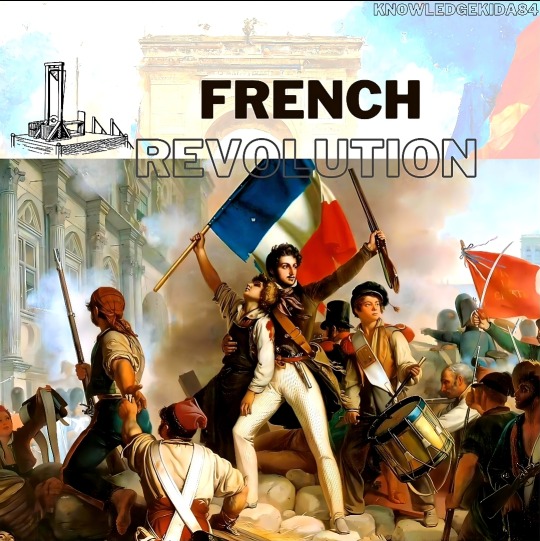
Introduction:-
The French Revolution is one of the most influential events in European history. It changed the political, social and economic landscape of France and its impact can still be felt globally. This period of political upheaval in France, which lasted from 1789 to 1799, was marked by significant changes in various aspects of French society, including the rise of republicanism, the end of the monarchy, and the rise to power of Napoleon Bonaparte.
One of the primary goals of the French Revolution was to bring fundamental political and social reform to France. At the heart of the French Revolution was the desire to establish a republican form of government based on the principles of liberty, equality and fraternity. This meant that the traditional institutions of monarchy and aristocracy had to be abolished and replaced with a more democratic structure that reflected the will and interests of the people.
The French Revolution also had an impact on Europe and other countries outside of it. For example, it inspired other European countries to follow suit and launch political movements aimed at bringing about lasting change in their respective countries. The spread of revolutionary ideas from France contributed to many revolts and revolutions throughout Europe during this period.
The French Revolution was a complex and multifaceted event that had a significant impact on all aspects of French society, including the political, social and economic systems. It inspired democratic movements in various parts of the world and continues to be studied and analyzed to this day. Thus, the legacy of the French Revolution lives on, and its lessons influence and inspire those who seek peaceful and democratic change in their societies and communities.
Learn more
1 note
·
View note
Text
WHAT IS REALITY OF KERALA STORY?

Hello Friends.
Recently a film was released called THE KERALA STORY on which there is a lot of discussion going on. This film shows how an intelligence game is being played in KERALA. Forcibly converting innocent women to Islam and sending them to ISIS.

According to this film and the film director, this has been done with about 32,000 girls. Which is buried in the deserts of Syria and Yemen today. What is the real story behind Kerala film? And how much truth is there in Kerala film? Let's try to know in today's article…learn more
2 notes
·
View notes
Text
How did life originate on Earth?
THEORY OF EVOLUTION
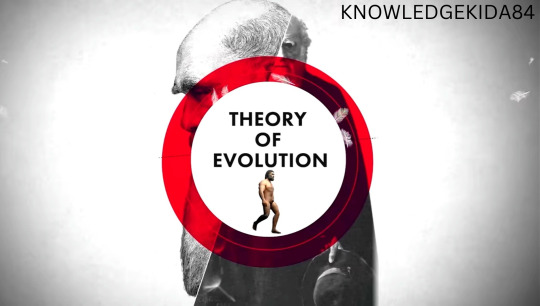
Hello friends
About 4 billion years ago, life begins on earth. Countless types of plant and animal species emerge after billions of years of evolution. All these trees, plants, animals and creatures that you see today, all these came due to evolution, one of these species is Homo Sapiens i.e. human being. But the question arises that if humans came from monkeys then why do we get to see monkeys even today?
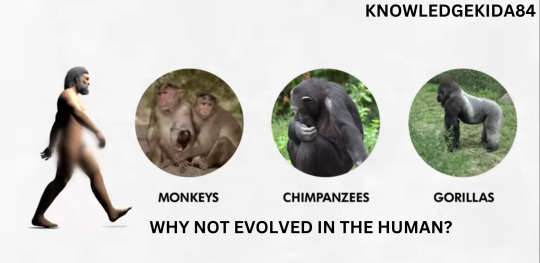
Why didn't all these monkeys, chimpanzees and gorillas join humans? Such questions are often raised. Some people even reject the developed by the people. It is said that this is a lie, after all, how much truth is there in this EVOLUTION THEORY? Is this theory or fact too? And how these different types of creatures were developed, let us know in today's article.

Let's clear up the biggest misconception guys from the beginning. THEORY OF EVOLUTION never says that monkeys became humans. Rather it is said that the ancestors of all chimpanzees, gorillas, monkeys and humans have been the same. And that ancestor is not alive today.
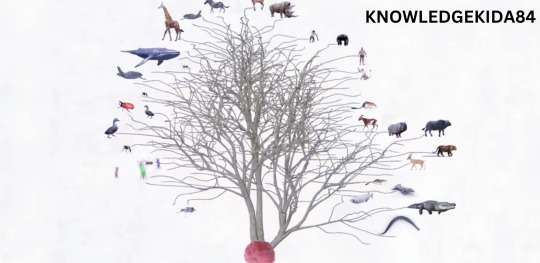
If you want to imagine EVOLUTION, then imagine a tree, a tree starts with just a thin stem, then branches are formed by going up, and small branches are formed from those branches, keep moving forward like this, if you keep moving then the tip You will see that the last point of this tree is all the living beings present today. But one question will still come in your mind that these were our ancestors, some of them became humans and some became chimpanzees, some became monkeys, why did this happen? You will understand the answer to this further in the article...learn more
1 note
·
View note
Text

2) Nazi Party
After Hitler returned to Munich in late 1918, he joined the small German Workers' Party, which aimed to unite the interests of the working class with a strong German nationalism. His skillful oratory and charismatic energy helped him advance in the ranks of the party, and in 1920 he left the army and took command of its propaganda efforts.
In one of Hitler's strokes of propaganda genius, the newly named National Socialist German Workers' Party, or Nazi Party, adopted a version of the swastika—an ancient sacred symbol from Hinduism, Jainism, and Buddhism—as its emblem. Hitler's swastika, printed in a white circle on a red background, would assume the form of a formidable symbolic force in the years to come.
By the end of 1921, Hitler led a growing Nazi Party capitalizing on widespread discontent with the Weimar Republic and the punitive terms of the Versailles Treaty. Many disgruntled ex-army officers joined the Nazis in Munich, notably Ernst Röhm, who recruited the "strong arm" squad – known as the Sturmabteilung (SA) – that guarded Hitler's party meetings. And used to attack the opponents...learn more
6 notes
·
View notes
Text

1) Adolf Hitler's military career
In 1913, Hitler moved to Munich in the German state of Bavaria. When World War I broke out the following summer, he successfully petitioned the Bavarian king to be allowed to volunteer in a reserve infantry regiment.
Deployed to Belgium in October 1914, Hitler served throughout the Great War and won two honors for bravery, including the rare Iron Cross First Class, which he wore until the end of his life.
Hitler was wounded twice during the conflict: he was wounded in the leg during the Battle of the Somme in 1916, and was temporarily blinded by a British gas attack near Ypres in 1918. Berlin, when the news of the Armistice and Germany's defeat came in the First World War.
Like many Germans, Hitler believed that the country's disastrous defeat could be attributed not to the Allies, but to insufficiently patriotic "traitors" in the country – a myth that weakened the post-war Weimar Republic. and set the stage for the rise of Hitler...learn more
1 note
·
View note
Text

1) Early life :-
Adolf Hitler was born on April 20, 1889, in Braunau am Inn, a small Austrian town near the Austro-German border. After his father Alois retired as a state customs official, young Adolf spent much of his childhood in Linz, the capital of Upper Austria.
Not wishing to follow in his father's footsteps as a civil servant, he struggled in secondary school and eventually dropped out. Alois died in 1903, and Adolf pursued his dream of being an artist, although he was rejected from the Academy of Fine Arts of Vienna.
After the death of his mother Clara in 1908, Hitler moved to Vienna, where he made a living painting scenes and monuments together and selling images. Lonely, isolated, and a voracious reader, Hitler became interested in politics during his years in Vienna and developed many of the ideas that would shape Nazi ideology...learn more
#history#knowledge#realty#war#information#american#india#geopolitics#japan#cold war#adolf k weismann#hiroshima#hitler fast war
2 notes
·
View notes
Text

The Battle of the Bulge
In late 1944, during the wake of the Allied forces' successful D-Day invasion of Normandy, France, it seemed as if the Second World War was all but over. On Dec. 16, with the onset of winter, the German army launched a counteroffensive that was intended to cut through the Allied forces in a manner that would turn the tide of the war in Hitler's favor. The battle that ensued is known historically as the Battle of the Bulge. The courage and fortitude of the American Soldier was tested against great adversity. Nevertheless, the quality of his response ultimately meant the victory of freedom over tyranny
Early on the misty winter morning of Dec. 16, 1944, more than 200,000 German troops and nearly 1,000 tanks launched Adolf Hitler's last bid to reverse the ebb in his fortunes that had begun when Allied troops landed in France on D-Day. Seeking to drive to the coast of the English Channel and split the Allied armies as they had done in May 1940, the Germans struck in the Ardennes Forest, a 75-mile stretch of the front characterized by dense woods and few roads, held by four inexperienced and battle-worn American divisions stationed there for rest and seasoning.
After a day of hard fighting, the Germans broke through the American front, surrounding most of an infantry division, seizing key crossroads, and advancing their spearheads toward the Meuse River, creating the projection that gave the battle its name.
Stories spread of the massacre of Soldiers and civilians at Malmedy and Stavelot, of paratroopers dropping behind the lines, and of English-speaking German soldiers, disguised as Americans, capturing critical bridges, cutting communications lines, and spreading rumors. For those who had lived through 1940, the picture was all too familiar. Belgian townspeople put away their Allied flags and brought out their swastikas. Police in Paris enforced an all-night curfew. British veterans waited nervously to see how the Americans would react to a full-scale German offensive, and British generals quietly acted to safeguard the Meuse River's crossings. Even American civilians, who had thought final victory was near were sobered by the Nazi onslaught.
But this was not 1940. The supreme Allied commander, Gen. Dwight D. Eisenhower rushed reinforcements to hold the shoulders of the German penetration. Within days, Lt. Gen. George S. Patton Jr. had turned his Third U.S. Army to the north and was counterattacking against the German flank. But the story of the Battle of the Bulge is above all the story of American Soldiers. Often isolated and unaware of the overall picture, they did their part to slow the Nazi advance, whether by delaying armored spearheads with obstinate defenses of vital crossroads, moving or burning critical gasoline stocks to keep them from the fuel-hungry German tanks, or coming up with questions on arcane Americana to stump possible Nazi infiltrators.
At the critical road junctions of St. Vith and Bastogne, American tankers and paratroopers fought off repeated attacks, and when the acting commander of the 101st Airborne Division in Bastogne was summoned by his German adversary to surrender, he simply responded, "Nuts!"
Within days, Patton's Third Army had relieved Bastogne, and to the north, the 2nd U.S. Armored Division stopped enemy tanks short of the Meuse River on Christmas. Through January, American troops, often wading through deep snow drifts, attacked the sides of the shrinking bulge until they had restored the front and set the stage for the final drive to victory.
Never again would Hitler be able to launch an offensive in the west on such a scale. An admiring British Prime Minister Sir Winston Churchill stated, "This is undoubtedly the greatest American battle of the war and will, I believe, be regarded as an ever-famous American victory." Indeed, in terms of participation and losses, the Battle of the Bulge is arguably the greatest battle in American military history...learn more
13 notes
·
View notes
Text
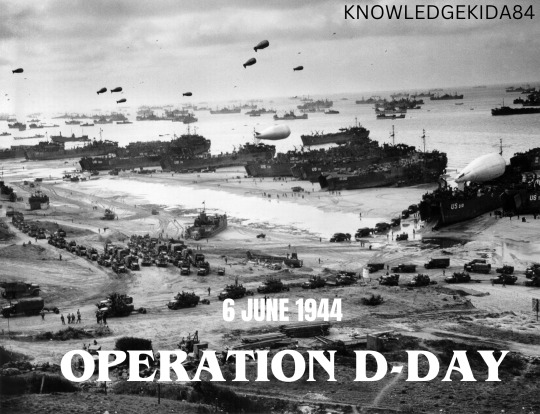
D-Day
During World War II (1939-1945), the Battle of Normandy, which lasted from June 1944 to August 1944, resulted in the Allied liberation of Western Europe from Nazi Germany’s control. Codenamed Operation Overlord, the battle began on June 6, 1944, also known as D-Day, when some 156,000 American, British and Canadian forces landed on five beaches along a 50-mile stretch of the heavily fortified coast of France’s Normandy region. The invasion was one of the largest amphibious military assaults in history and required extensive planning. Prior to D-Day, the Allies conducted a large-scale deception campaign designed to mislead the Germans about the intended invasion target. By late August 1944, all of northern France had been liberated, and by the following spring the Allies had defeated the Germans. The Normandy landings have been called the beginning of the end of war in Europe..learn more
1 note
·
View note
Text
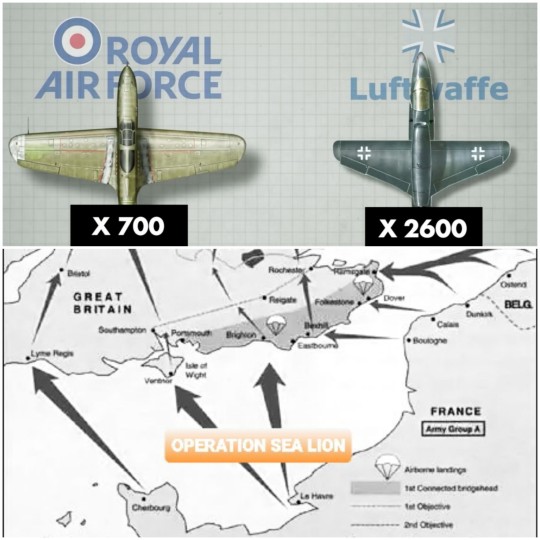
Hitler strategises OPERATION SEA LION to attack British. Here it is thought that how to attack Britain on the ground, so there is no connection. Soldiers cannot be sent like this between UK and Mainland Europe. If tried through ships, the BRITISH ROYAL NAVY has far more ships. It will not sit well in comparison to Germany. Then it is decided by Hitler that first the airfield should be sealed. Germany Air force LUFTWAFFE has 2600 airplanes. UK ROYAL AIR FORCE has only 700. That is why on July 10, 1940, Hitler attacks Britain through the air ...learn more
#history#knowledge#realty#information#war#american#geopolitics#india#japan#cold war#OPERATION SEA LIONS#world war
0 notes
Text

Hello Friends!
In the previous part, you saw how World War 2 started. In the second part, we will see how World War 2 ended and how ADOLF HITLER was defeated? Britain was the only country left which stood against GERMANY. Germany's Dictator Adolf Hitler had captured almost all the countries around him. Austria, Poland, Norway, Belgium, Denmark, France all these countries were occupied by Hitler. The country of Italy in the south was ruled by another Dictator. In the name of Mussolini, he had formed an alliance with Hitler, both were working together. So broadly speaking, only three big countries were left in Europe Germany, Soviet union, Britain. A peace agreement was also going on between Germany and the Soviet Union. So Hitler had no need to be afraid of Soviet because Soviet never attack Germany. This meant that Britain was the only country left standing against Germany. America on the other side of the world did not want to get involved in this war. In such a situation, the question arises that how did this situation change? How was Hitler defeated? Let's know the complete story of WORLD WAR 2 in today's article.
Learn more
#history#knowledge#realty#information#war#american#geopolitics#india#japan#cold war#Hitler#world war 2#World war I
0 notes
Text
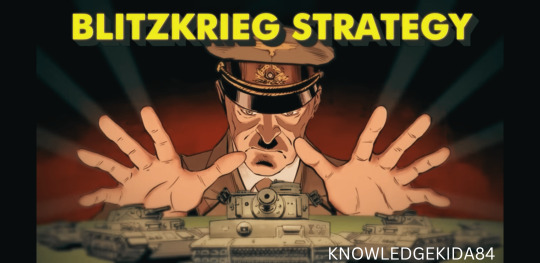
Mention is made here about Hitler's Revolutionary warfare strategy which was called Blitzkrieg strategy. With its help, Hitler successfully attacked many countries. It was a military strategy that focused on speed and power. So fast we will attack other's country by using tanks, others will not get a chance to think, then our air force will come from above which was called LUFTWAFFE and the attack will happen with a lightning speed. The word BLITZ means Lightning in German. Hitler's focus was to win the smallest battle. He should fight such a war that it ends as soon as possible, it doesn't even take a week. Drugs were also given to German soldiers to maintain this Blitzkrieg.
Learn more.
0 notes
Text
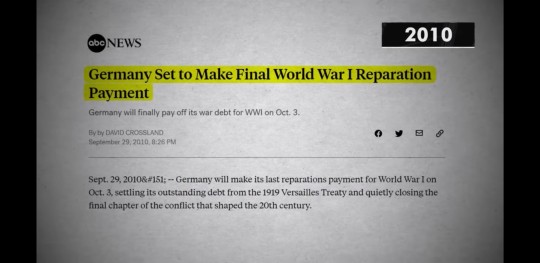
The result was that according to the Treaty of Versailles, Germany was asked to compensate for the loss of 33 Billion Dollars, which it did, today it costs 270 Billion Dollars. This is so much money that by the year 2010, Germany had filled the last installments, it took almost 100 years.
Learn more.
#history#knowledge#realty#information#american#war#geopolitics#india#japan#cold war#world war 2#hitler fast war
0 notes
Text
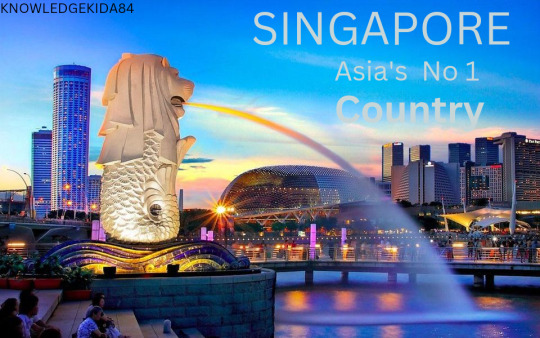
How did Singapore become the number 1 country in Asia?
Hello Friends,
Today, how did I tell you that Singapore became the number one country in Asia, whereas in the year 1965, the condition of Singapore was very bad. Poor and its crime rate was very high, although there was a lot of drug problem there. The problem of large number of people was being seen there. What happens in these 25 years that Singapore becomes the most developing and money earning country. Today Singapore is counted among the top five richest countries. Today there is almost no crime and no corruption in Singapore. Let us then know how Singapore became the richest country in Asia.
Learn more.
1 note
·
View note
Text

A whip is an official of a political party whose task is to ensure party discipline in a legislature. This means ensuring that members of the party vote according to the party platform, rather than according to their own individual ideology or the will of their donors or constituents. Whips are the party's "enforcers".
Learn more.
0 notes
Text

The result was that in the year 1933, Hitler declared himself the DICTATOR of Germany. After taking full control in his hands, Hitler sets out to fulfill his dream of the German Empire. Each Germany Reich will be a pure state where only people of Aryan race will live here. There will be no place for Jews and Slaves here. Judeo Bolshevism conspiracy theory is made to create hatred inside people. According to this conspiracy theory, the Russian Revolution took place in the year 1917 and that was done by the Jews. This led to the disintegration of the Soviet Union. In the year 1935, the rest of the world came to know that Germany had its own air force power. You would think what a big deal this is, every country has an air force. But in the Treaty of Versailles, a condition was laid that Germany would not have any military power of its own. Hitler was openly denying the Treaty of Versailles. At that time, Britain was feeling that what was written in the Treaty of Versailles. O was unfair to Germany. We are taking so much money from them because of what the condition of this country has become.
LEARN MORE.
#history#knowledge#realty#information#war#american#geopolitics#india#japan#cold war#world war 2#world war#fact
0 notes